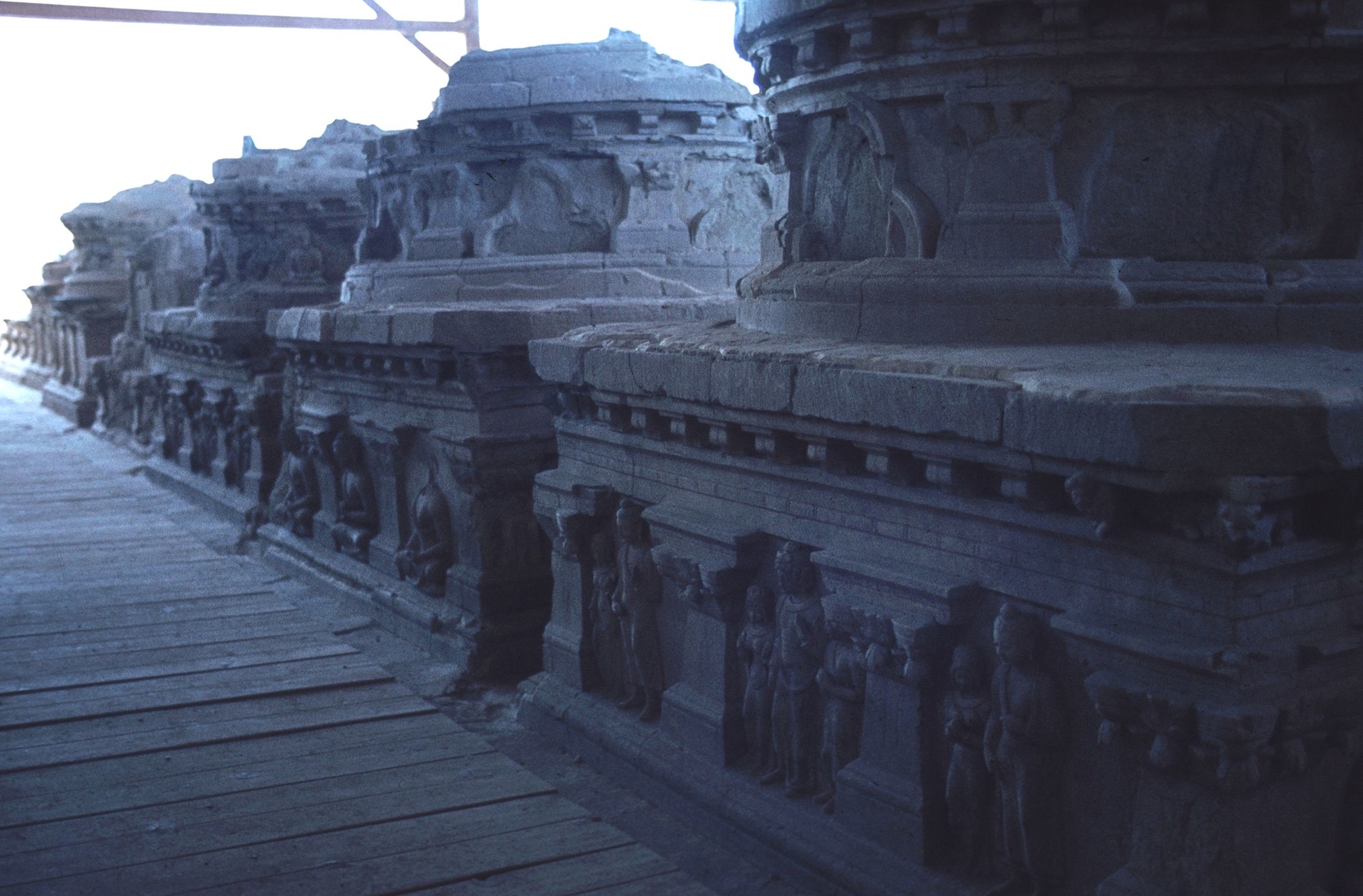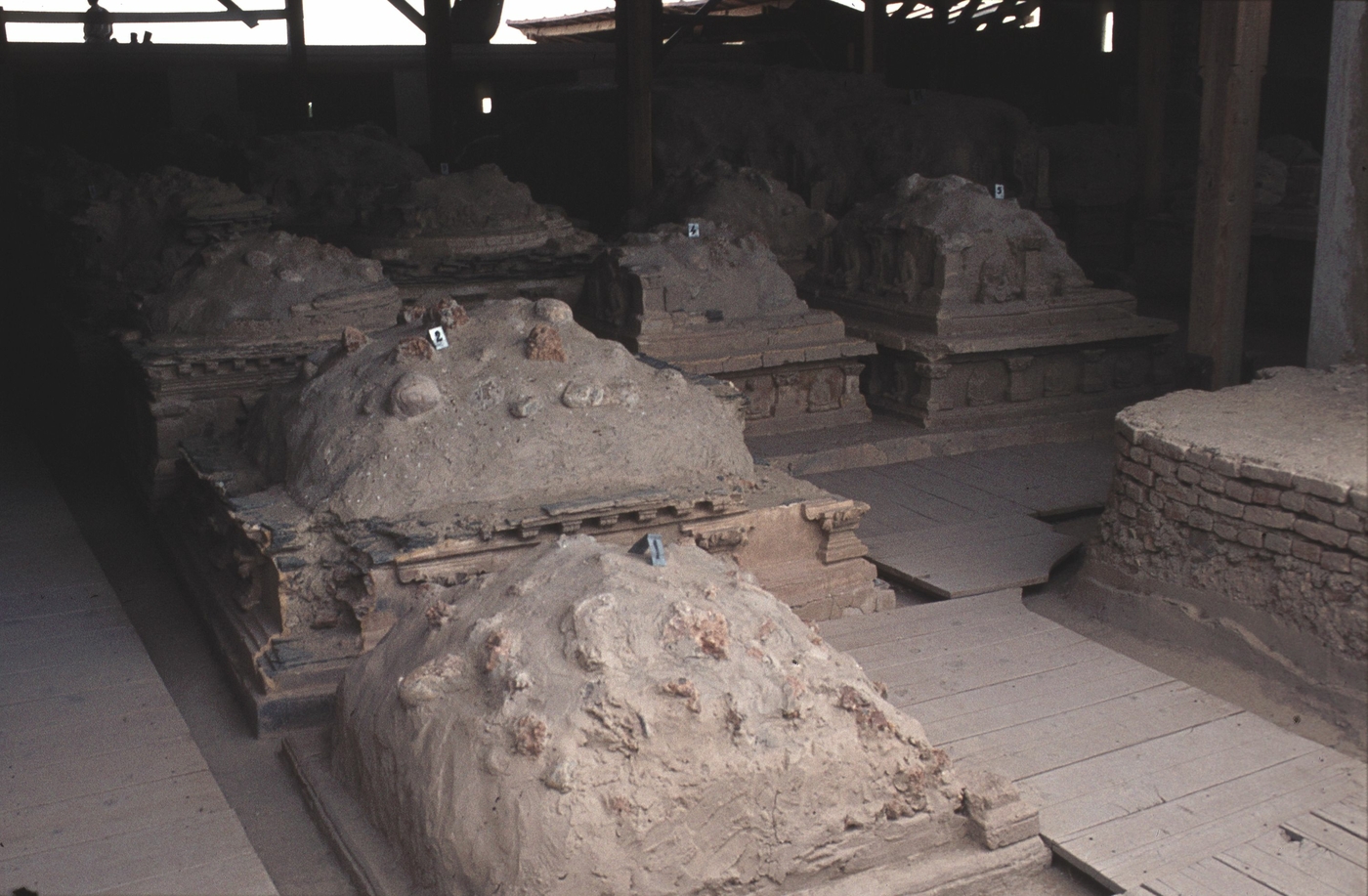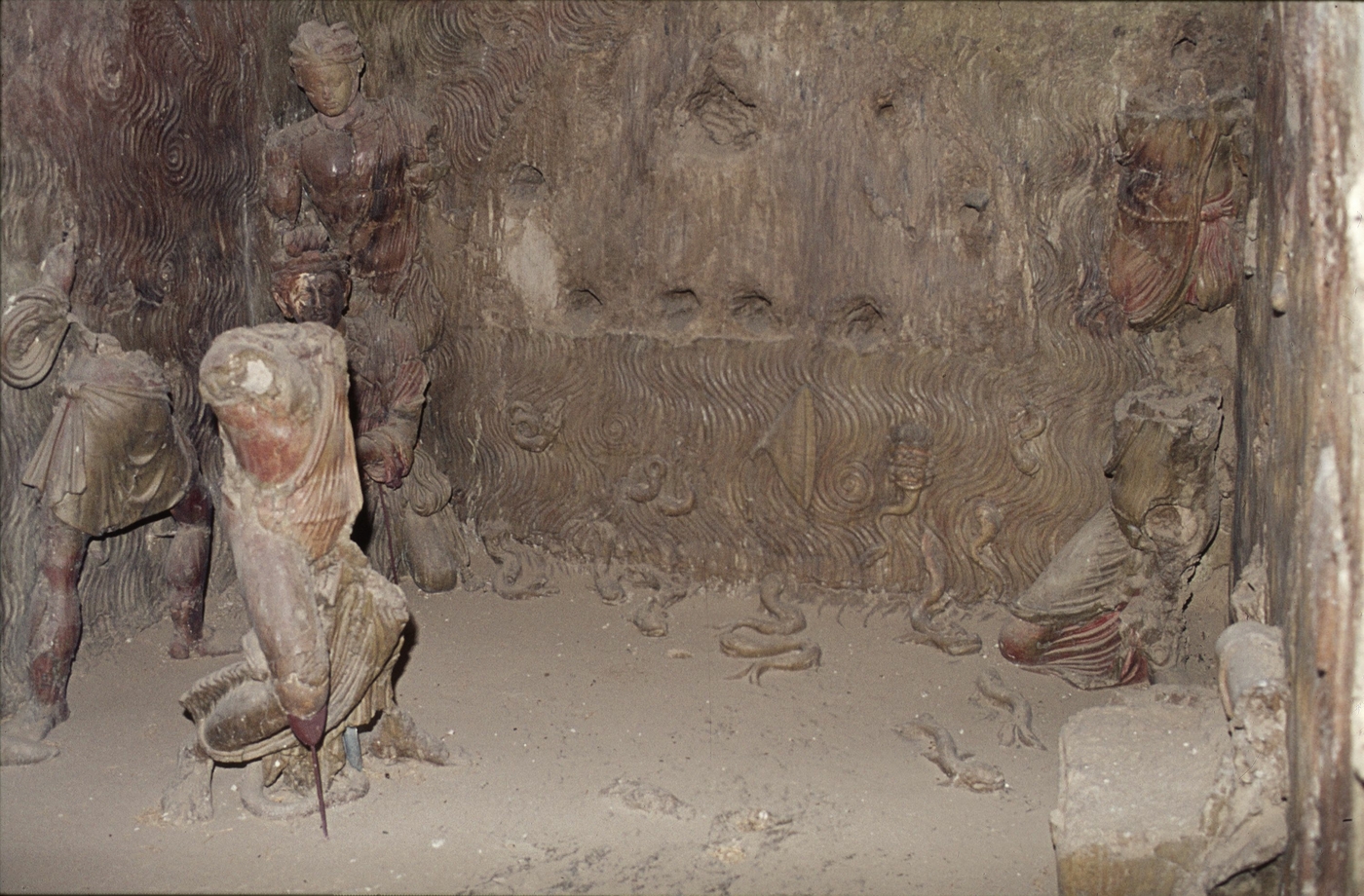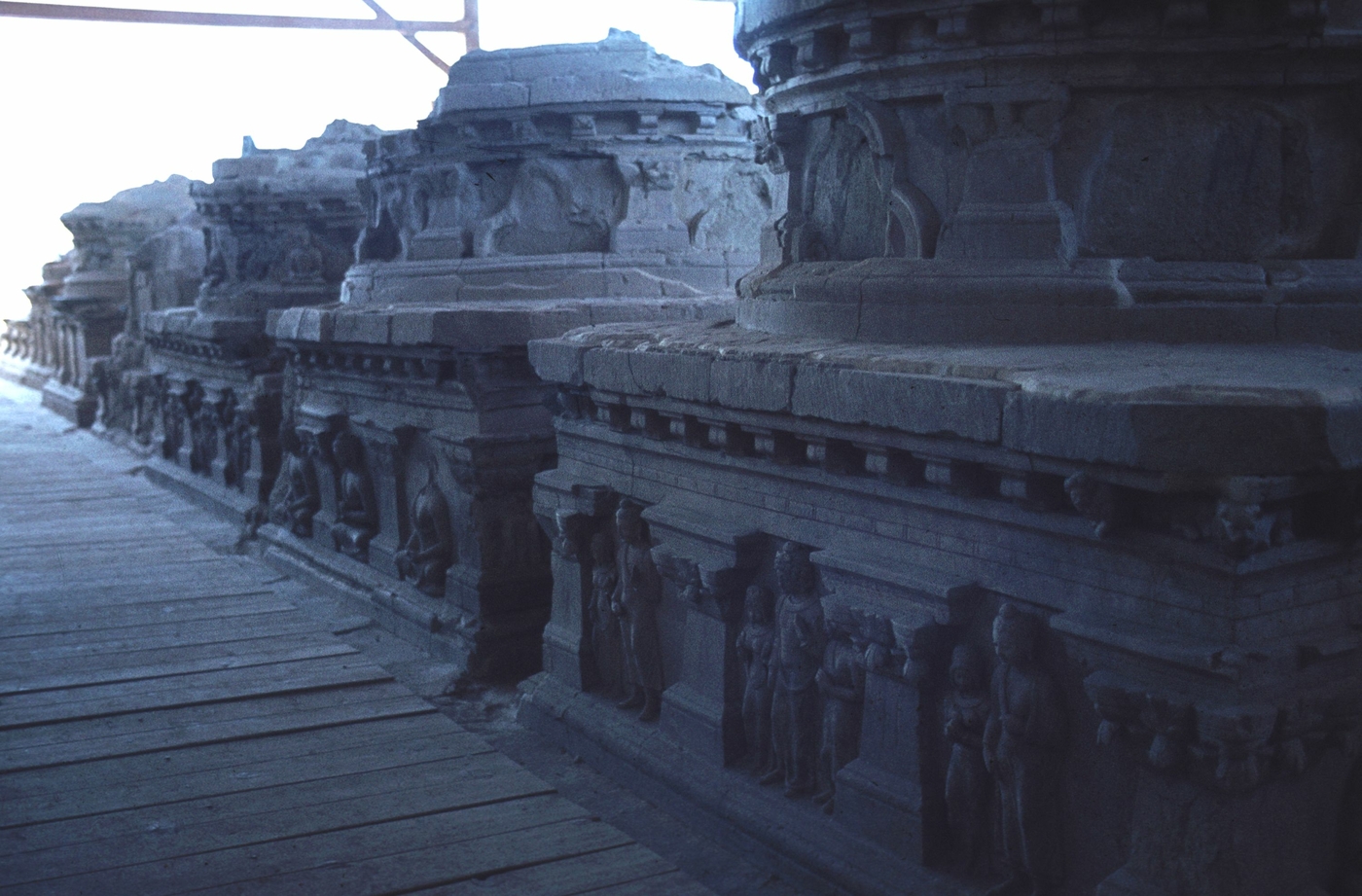Hadda
Hadda is a leading site for anyone interested in the art of Gandhara thanks to the quality and quantity of the sculptures discovered there. It also marks a key stage in Afghan Buddhist history and its intellectual development.

A network of Buddhist monasteries
The various sites at Hadda are just a few kilometres to the east and south of Jalalabad, the capital of Nangahar province, which owed its fortune and strategic importance to the fact that it controlled the main route to India via the Khyber Pass.
It is composed of a series of Buddhist monasteries spanning an area of 4 to 5 km2. This sector was partially explored by DAFA from 1926 to 1927 by Jules Barthoux, and then in the 1970s by the Institut Afghan d’archéologie, and in particular by Zemaryalaï Tarzi.
Hundreds of stone or mud statues were found here, making it one of the largest bodies of Buddhist art dating from the first centuries CE. Many of them are now kept in the Musée Guimet and the National Museum in Kabul, where unfortunately they were mostly destroyed by the fires that gutted this building during the iconoclastic campaigns carried out by the Taliban.
Between Indo-Buddhist and Classical influences
The Buddhist complex of Hadda played an important role both in defining the key tenets of Buddhism and in the maturing and development of Gandhara art. It would seem, however, to represent a particular way of practising the religion, judging by the significance of Greek and Roman influences on the finds.
It includes depictions of figures from the Indo-Buddhist world, such as Vajrapani, the protector of Buddha and then the symbol of strength in Buddhism, the iconography of which is typically Greek, to the extent that it resembles a depiction of Heracles. Descriptions of the sites made in the 7th century CE by the Buddhist pilgrim Xuan Zan, attest to the fact that thousands of monks once lived here, divided between one hundred or so monasteries.
Archaeological research in Hadda
Our Afghan colleagues continue to study the sites at Hadda, which are threatened by looting and erosion. The security situation makes fieldwork very difficult in this sector that, already in the 1920s, had the reputation of being a centre for fundamentalist Islamist proselytism and recruitment. The collections from Hadda kept in the National Museum in Kabul were among the worst affected by the campaign of destruction carried out by the Taliban between 2000 and 2001.






